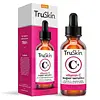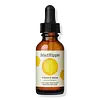What's inside
What's inside
 Key Ingredients
Key Ingredients

 Benefits
Benefits

 Concerns
Concerns

No concerns
 Ingredients Side-by-side
Ingredients Side-by-side

Ascorbic Acid
AntioxidantHyaluronic Acid
HumectantRosa Canina Fruit Oil
EmollientDimethyl Sulfone
SolventRetinol
Skin ConditioningSqualane
EmollientNiacinamide
SmoothingArginine
MaskingSalicylic Acid
MaskingCitrus Grandis Peel Oil
MaskingAloe Barbadensis Leaf
MaskingCentella Asiatica Extract
CleansingEquisetum Arvense Extract
AstringentGeranium Maculatum Extract
TonicCarbomer
Emulsion StabilisingPhenoxyethanol
PreservativeEthylhexylglycerin
Skin ConditioningAscorbic Acid, Hyaluronic Acid, Rosa Canina Fruit Oil, Dimethyl Sulfone, Retinol, Squalane, Niacinamide, Arginine, Salicylic Acid, Citrus Grandis Peel Oil, Aloe Barbadensis Leaf, Centella Asiatica Extract, Equisetum Arvense Extract, Geranium Maculatum Extract, Carbomer, Phenoxyethanol, Ethylhexylglycerin
Water
Skin ConditioningSodium Ascorbyl Phosphate
AntioxidantC12-15 Alkyl Benzoate
AntimicrobialGlycerin
HumectantSodium Levulinate
Skin ConditioningSodium Anisate
AntimicrobialSalvia Sclarea Oil
MaskingCitrus Grandis Fruit Extract
AstringentHyaluronic Acid
HumectantAmorphophallus Konjac Root Powder
AbrasiveAloe Barbadensis Leaf
MaskingTocotrienols
Skin ConditioningFerulic Acid
AntimicrobialChamomilla Recutita Extract
Skin ConditioningSodium Phytate
Xanthan Gum
EmulsifyingHydroxyethylcellulose
Emulsion StabilisingWater, Sodium Ascorbyl Phosphate, C12-15 Alkyl Benzoate, Glycerin, Sodium Levulinate, Sodium Anisate, Salvia Sclarea Oil, Citrus Grandis Fruit Extract, Hyaluronic Acid, Amorphophallus Konjac Root Powder, Aloe Barbadensis Leaf, Tocotrienols, Ferulic Acid, Chamomilla Recutita Extract, Sodium Phytate, Xanthan Gum, Hydroxyethylcellulose
 Reviews
Reviews

Ingredients Explained
These ingredients are found in both products.
Ingredients higher up in an ingredient list are typically present in a larger amount.
Aloe Barbadensis Leaf is a plant material from the leaves of the aloe, Aloe barbadensis, Liliaceae
Aloe leaves contain the antioxidants Vitamins A, C, and E. These vitamins neutralize free radicals.
It also contains sugars in the form of monosaccharides and polysaccharides, folic acid, choline, many common minerals such as calcium, 12 anthraquinones, fatty acids, amino acids, and Vitamin B12.
Polysaccharides help hydrate your skin by mimicking your skin's natural carbohydrates.
Aloe leaves contain many components that are known to help reduce irritation and itchiness. These include vitamins, amino acids, polysaccharides, and more. The high water content of aloe also helps give a cooling effect. This makes aloe an effective sunburn reliever.
Despite helping heal sunburns, aloe does not protect your skin against UV damage. Aloe should not replace your sunscreen.
Learn more about Aloe Barbadensis LeafHyaluronic acid is naturally found in healthy skin. It is a humectant, meaning it draws moisture to your skin.
This ingredient helps hydrate, soothe, and protect the skin.
What makes hyaluronic acid so hydrating? It has the capacity to bind or hold large amounts of water.
Fun fact: It is already naturally found in our bodies, such as the fluids of our eyes and our joints.
Studies find this ingredient to have anti-inflammatory and anti-microbial properties. This can help speed up wound-healing.
Hyaluronic acid can be irritating if the molecule has a low-molecular weight, or if the molecules are small.
One study found low-molecular weight hyaluronic acid to be pro-inflammatory, meaning some people may experience irritation. This is because our bodies use hyaluronic acid in the wound-healing process to signal to our bodies, via irritation, that something needs healing.
The same study found high-molecular weight hyaluronic acid to be anti-inflammatory.
These are some other common types of Hyaluronic Acid:
Learn more about Hyaluronic Acid